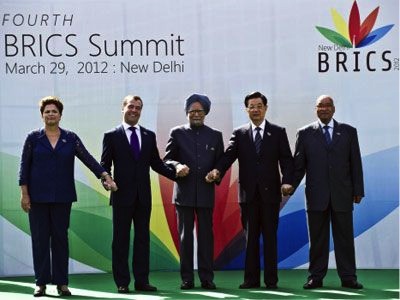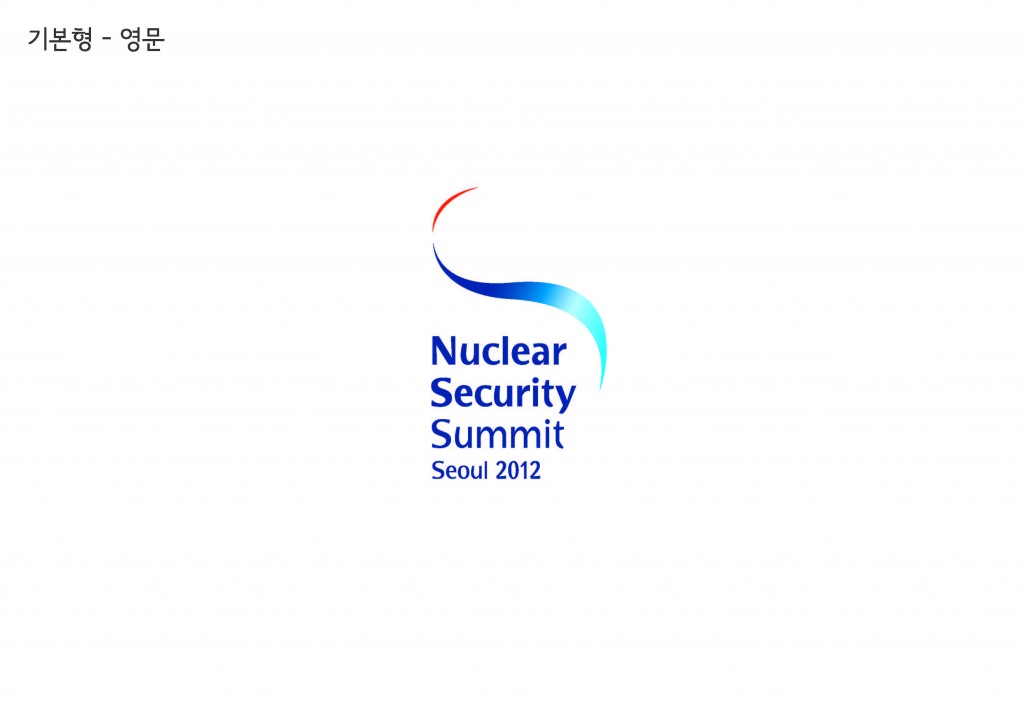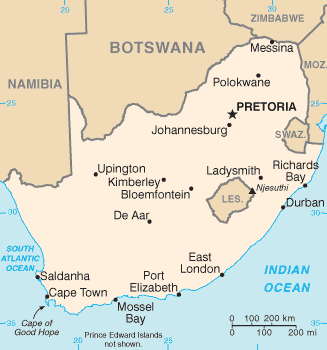There has been a fair degree of speculation – and comment – going on around the global media and in the blogosphere whether the fourth Summit of the BRICS in New Delhi represents a new global leadership group – read that as an alternative to the the traditional powers – whether G7 or G8 or even the G20 or a setting for collective thinking from these countries?
My colleague Stewart Patrick – at the Internationalist blog at the Council on Foreign Relations captured what he sees as the common characteristics of this gathering:
But if the members lacked a common history or vision, they had at least two things in common: their status as emerging economic powerhouses and their resentment of a global economy they saw stacked in favor of the West.
By now it is rather common knowledge that the group – BRICS – was born from the fertile mind of Jim O’Neill of Goldman Sachs and was identified initially as an investment focus for clients of the investment bank for the 21st century.
This Indian gathering – the 4th and the first to formally include South Africa – has been watched with some fascination by the media and the global punditry. Now many commentators have pointed out the rather obvious – that these large emerging market powers have little in common. In the BRICS there are both democratic states – Brazil, India and South Africa, and two notable authoritarian states – Russia and China. But so what. If we are searching for the “like minded – we are now talking about a “concert of powers” where the common characteristics might well be essential. In fact the capacity to join states together with a variety of characteristics and views may be crucial in contemporary global summitry. Indeed as is often pointed out the G20 is important precisely because it bridges across traditional states – the G7 – and gathers these states together with the new large emerging market states. It is not a gathering of the like-minded – but it is a gathering of the key contemporary powers. It doesn’t make reaching coordinated decisions easy but it brings to the High Table of Global Summitry the major actors in the global economy.
But what then is the point of the BRICS and their annual leaders gathering – and more? For some the point of this exercise is – not much. As Parag Khanna of the New America Foundation wrote in the FT:
Being in the Brics ultimately may not mean much more than being in the UN Security Council or any other high-status grouping (despite the obvious difference that the UN is legal body). One can be in the group, but that doesn’t guarantee that one will be influential or even that the group as a whole will be effective.
The Leaders closed their Summit with the Delhi Declaration. It is possible to gather a number of clues about the existence and the self-identified mission of the BRICS from examining the most recent declaration. In their own words the Declaration argued that the BRICS:
BRICS is a platform for dialogue and cooperation amongst countries that represent 43% of the world’s population, for the promotion of peace , security and development in a multi-polar, inter-dependent and increasingly complex, globalizing world. Coming, as we do, from Asia, Europe and Latin America, the transcontinental dimension of our interaction adds to its value and significance.
The comment from the BRICS Leaders on the G20 suggests a rather positive note from these large emerging market Leaders with respect to this new global summit instrument:
In this context, we believe that the primary role of the G20 as premier forum for international economic cooperation at this juncture is to facilitate enhanced macroeconomic policy coordination, to enable global economic recovery and secure financial stability, including through an improved international monetary and financial architecture. We approach the next G20 Summit in Mexico with commitment to work with the Presidency, all members and the international community to achieve positive results, consistent with national policy frameworks, to ensure strong, sustainable ans balanced growth.
But there are more than a few paragraphs that constitute – well carping by the BRICS Leaders of the influence and direction promoted by the traditional states. There is frustration at the “loose” monetary policy of more than a few traditional power central banks. There is almost exasperation at the slow pace of quota and governance reform at the IMF and the World Bank. There is annoyance at the effort by the US to appoint yet again the new head of the World Bank rather than opening up the choice to a wider range of applicants including those from the BRICS countries. In these sections there is more than a hint of oppositional leadership to the influence and leadership of the global economy by the traditional G7 countries.
When one looks to collective outputs one is not particularly “bowled over” by collective actions. There is discussion of intra-bloc trade using local currencies – which may only impede fully currency convertibility for a number of these states including China – and investigation of a new development bank facility. Other than that there is a significant listing of ministerial gathers, finance, trade, science and technology and health ministers, etc. – see in particular the Delhi Action Plan – but it is rather obscure as to what the goals for such meetings are. While such gatherings might be helpful, one assumes that G20 ministerial meetings might be even more useful for such ministers and the need to hold both might well run these ministers ragged.
The dilemma at first blush is whether the BRICS see themselves as a a “bloc” – potentially an oppositional bloc – that stands apart from the G7 and criticizes their efforts to bring reform – and potentially blocking coordination and reform. Such a creation could well be harmful in an already challenged global governance regime. On the other hand a caucus where ideas can be vetted but where coordination and decision making occurs at other leadership settings with traditional players, newly energized middle powers and developing countries – well that might prove a useful coalition.
Meanwhile the challenges posed by global governance continue – BRICS or no BRICS.
Image Credit: AFP




